Smart social media branding helps startups compete with big companies by building real connections, showing their unique value, and creating loyal customers who spread the word.
As of early 2025, 5.24 billion people worldwide are active social media users, equating to 63.9% of the global population. Among internet users aged 18+, adoption climbs to 94.2%
Social media changed everything for new businesses. Before, startups struggled to get noticed next to big brands with huge budgets. Now, a great social media strategy can level the playing field.
The rules are simple: be authentic, stay consistent, and focus on building relationships instead of just selling products. When startups master these basics, they turn followers into customers and customers into brand champions.
Mission Control empowers startups to transform their vision into compelling brand experiences, combining creative strategy, design, and venture support for lasting impact.
What Is Social Media Branding?
Social media branding goes deeper than posting pretty pictures or clever captions. It's how you share your company's story, values, and personality in places where your customers already spend their time.
Source: DataReportal
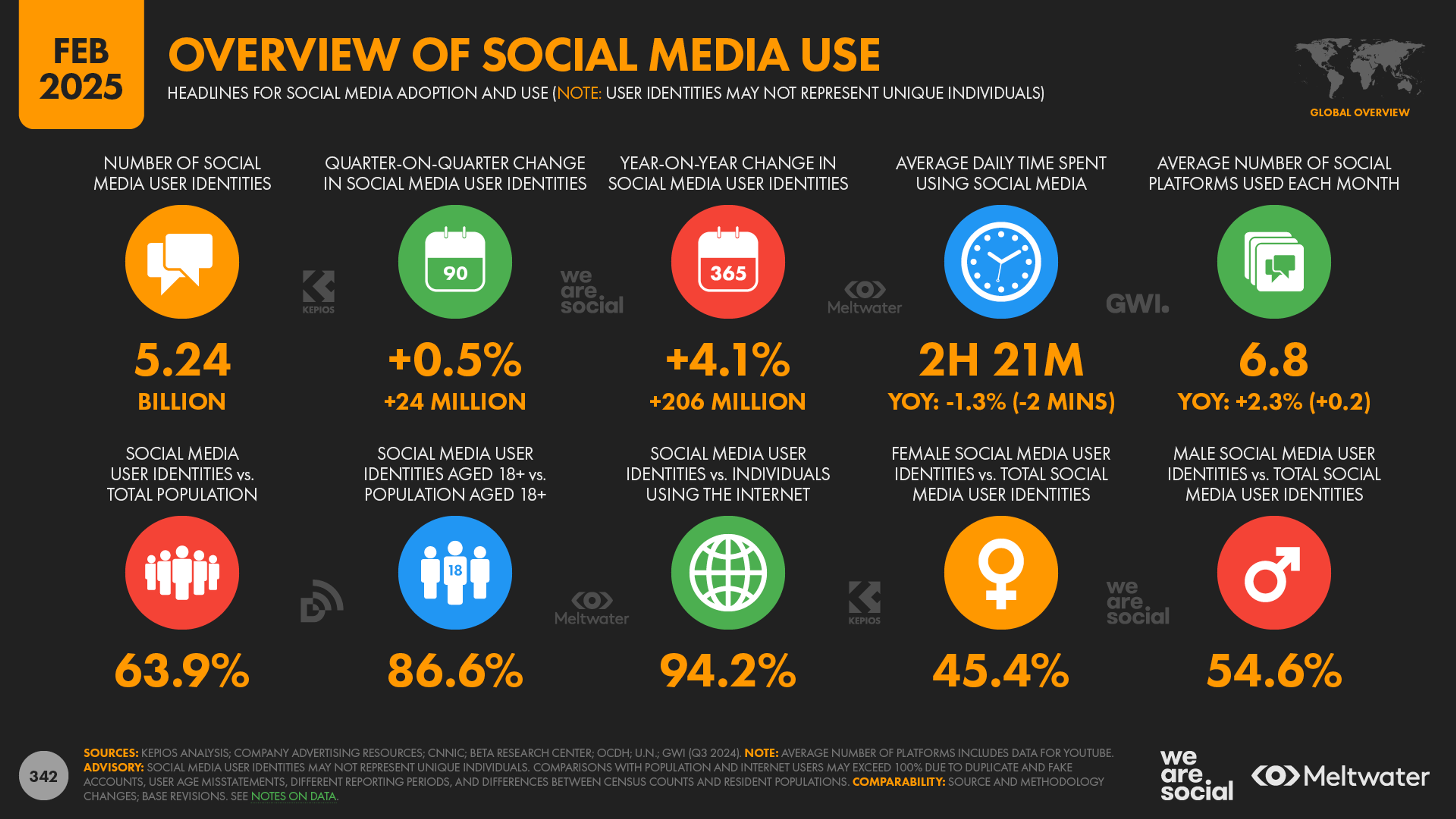
Think of it as your brand's digital personality. Everything you post should feel like it comes from the same person - someone your audience wants to hang out with and trust.
The best social media branding combines three elements:
- Visual style that people recognize instantly
- A voice that sounds human and relatable
- Content that actually helps your audience
A notable study (#BrandsGetReal: What Consumers Want From Brands in a Divided Society) found that:
- 91% of consumers believe social media can connect people
- 78% want brands to use social platforms to bring people together
This approach works especially well for startups. You're small enough to respond personally to comments, flexible enough to try new ideas, and authentic enough to build real connections.
Building Your Brand Foundation
Know Who You're Talking To
Your target audience isn't "everyone who might buy our product." It's the specific group of people who need what you offer and will engage with your content.
Start by asking these questions:
- What problems do they face daily?
- Which social platforms do they use most?
- What type of content makes them stop scrolling?
- When are they most active online?
Use social listening tools (like Sprout Social and HubSpot) to discover what your audience talks about, what frustrates them, and what excites them. This research shapes everything from your posting schedule to your content topics.
Building Your Brand Identity for Social Media
Your brand identity is the base for everything you share on social media. It includes your mission, values, personality, and visual style.
Every post should reflect your identity. Start by defining your core values. What does your company believe in? What problems do you solve? How do you want people to feel when they see your content?
Brand Design Elements by Clay
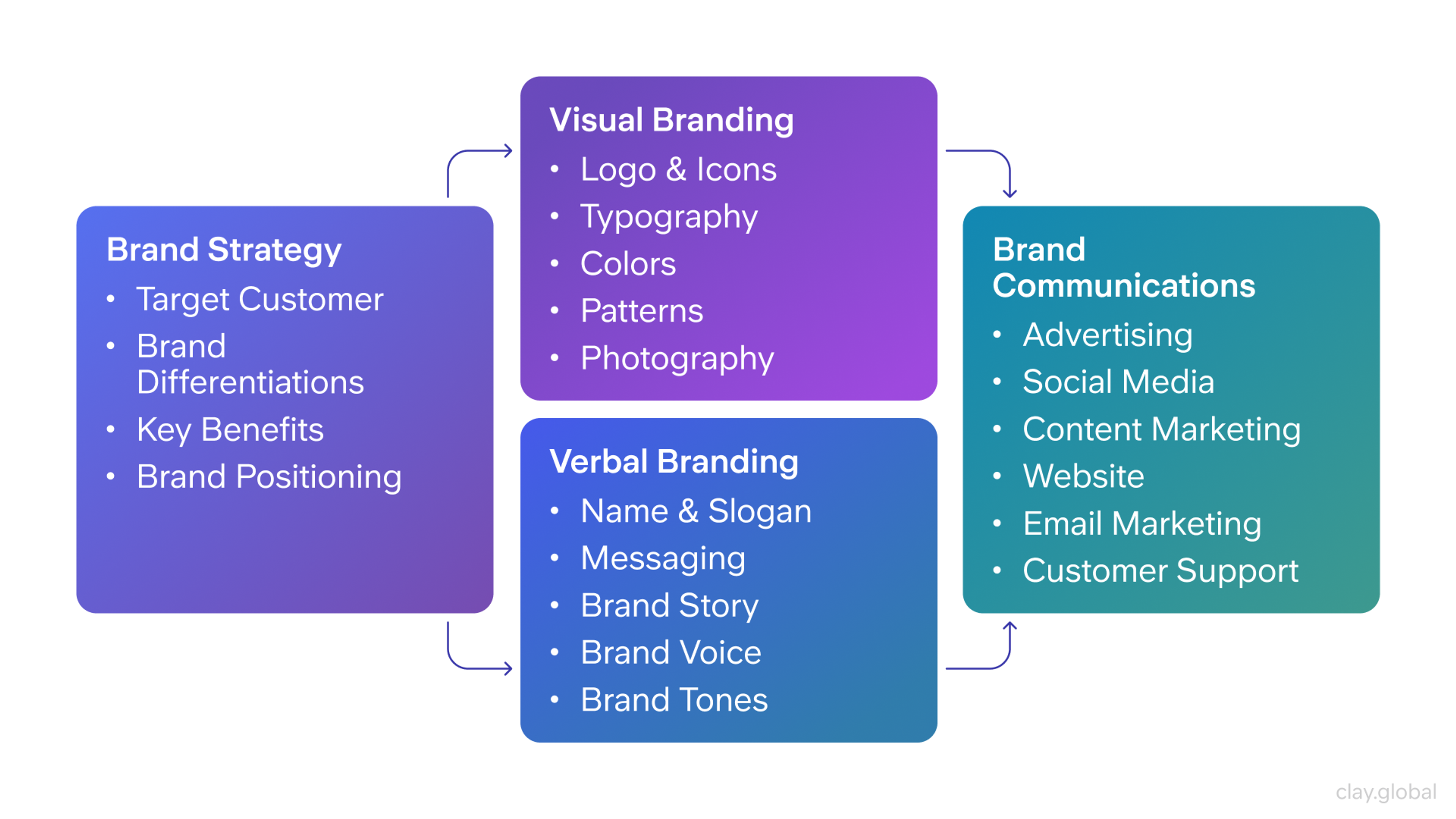
Choose a brand personality that fits your audience and goals. Are you professional like LinkedIn or casual like TikTok? Your tone should match what your audience expects.
Your visuals also matter. This includes your logo, colors, fonts, and photo style. Tools like Canva or Adobe help you keep these elements consistent. Use the same colors and fonts across platforms to build recognition.
Some brands, like Glossier, use a friendly, casual tone to make followers feel like they’re talking to a friend, not a company. This approach turns followers into loyal customers.
Choose Your Platforms Wisely
Don't try to be everywhere at once. Pick 2-3 platforms where your audience is most active and do those really well.
Instagram works best for visual brands, lifestyle products, and B2C companies targeting younger demographics.
LinkedIn is perfect for B2B startups, professional services, and thought leadership content.
TikTok offers huge opportunities for startups willing to experiment with short-form video content and authentic behind-the-scenes content.
TikTok offers the highest average engagement for small businesses at 4.26%, making it a strong choice for startups willing to experiment with short-form, narrative-driven, and behind-the-scenes content.
YouTube provides excellent SEO benefits and works well for educational content, product demos, and building long-term audience relationships.
Twitter/X excels for real-time updates, customer service, and industry conversations.
Pinterest drives traffic for visual brands in fashion, food, home decor, and lifestyle categories.
Source: wordstream.com
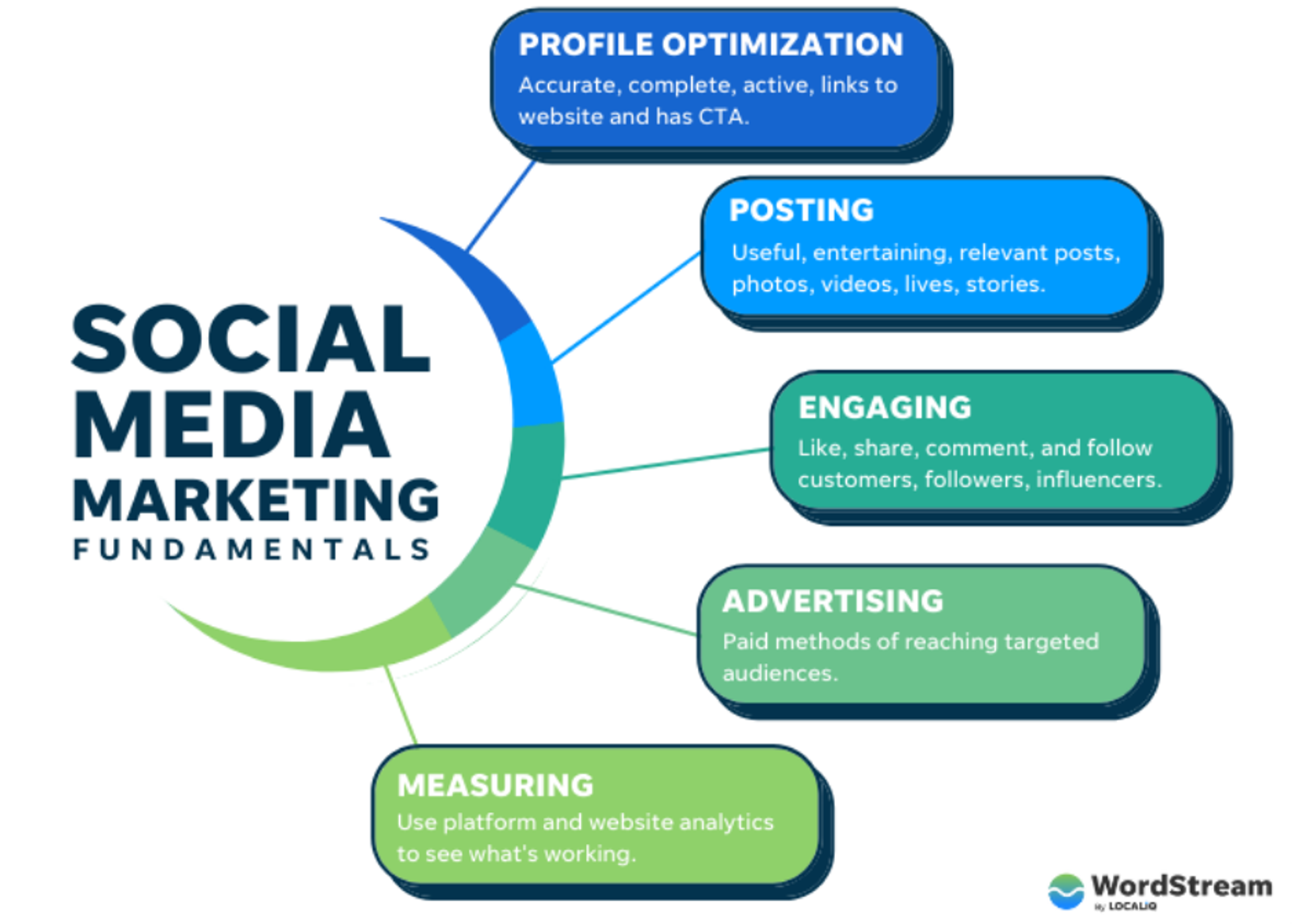
Developing Your Brand Voice
Your brand voice is how you communicate on every platform. It should stay consistent, feel real, and match your audience.
A strong brand voice helps you stand out in busy social media feeds. It should always provide value, not just sound clever or funny.
Start by choosing a few words that describe your brand. Are you professional, casual, friendly, or bold? Use those words to guide your content.
Create a simple brand voice guide. Include tone examples, words to avoid, and how to handle replies. Decide how you’ll use emojis or other style details.
Tools like Buffer and Hootsuite help your team stay consistent. You can schedule posts and keep your voice clear across all platforms.
Source: glossier
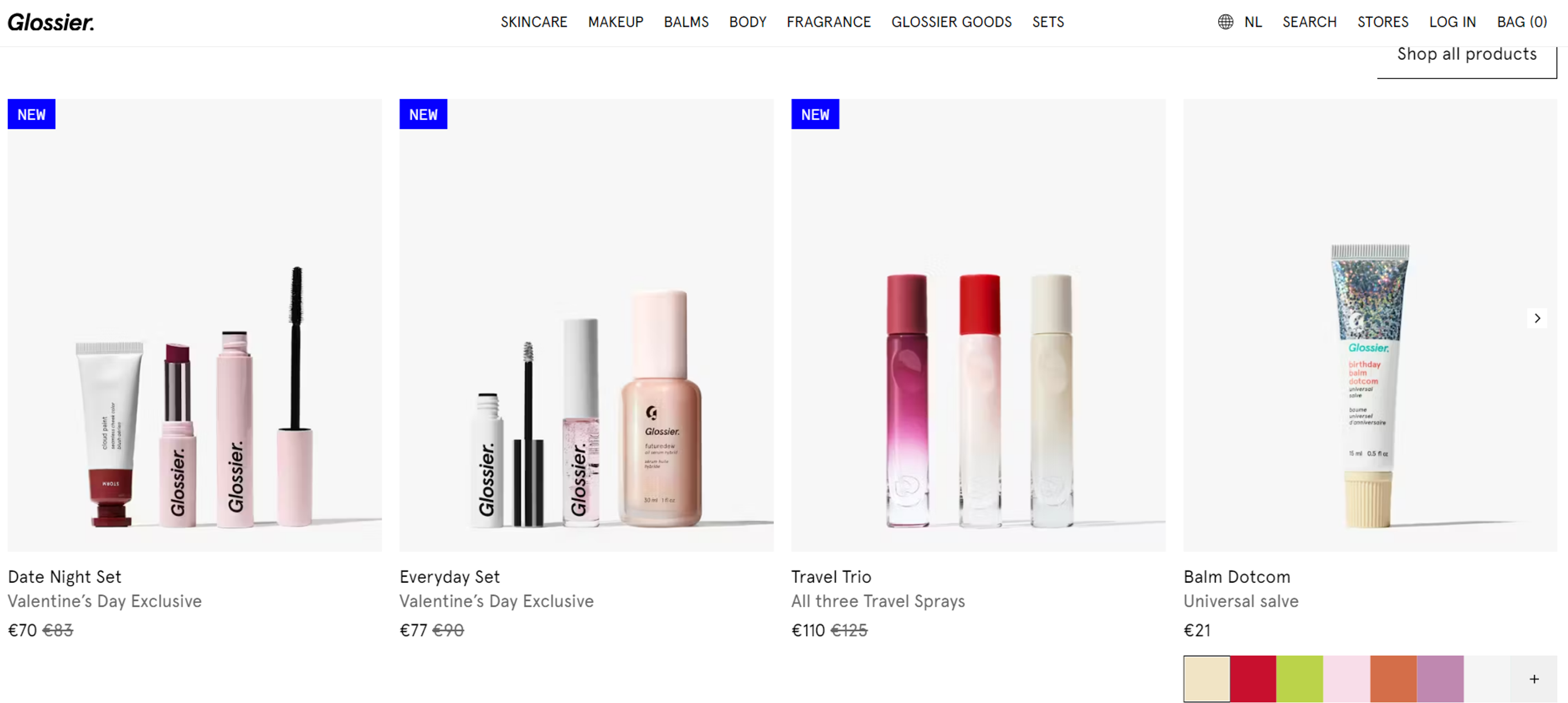
Creating Content That Connects
The Content That Actually Works
Stop creating content that looks good and start creating content that does good. Your audience should finish reading your posts feeling smarter, more informed, or genuinely entertained.
Educational Content performs consistently well across all platforms. Canva built a massive following by teaching people design basics. Buffer shares social media tips that help their audience succeed.
Behind-the-Scenes Content humanizes your brand. Show your team working, celebrate small wins, and share the real story of building your company.
User-Generated Content provides social proof while building community. Create hashtag campaigns that encourage customers to share their experiences with your product.
Problem-Solving Content positions you as helpful rather than salesy. Address common questions, share industry insights, and provide actionable tips.
Platform-Specific Strategies
Instagram Success Formula:
- Use Stories highlights to organize important content
- Create Reels that showcase your product in action
- Partner with micro-influencers in your industry
- Post consistently but prioritize quality over quantity
LinkedIn Growth Tactics:
- Share industry insights and thought leadership content
- Comment meaningfully on posts from potential customers
- Use LinkedIn Groups to join relevant industry conversations
- Create long-form posts that spark professional discussions
TikTok for Startups:
- Show authentic moments from your startup journey
- Create educational content in entertaining formats
- Use trending sounds while staying true to your brand
- Collaborate with creators who align with your values
Building Community and Engagement
Social media branding works best when you build real relationships with your audience. It should feel like a two-way conversation.
Respond to comments and messages quickly. People expect fast replies, especially for customer service. Turn on notifications so you can answer within a few hours.
Source: sproutsocial

Ask questions to start conversations. Post content that invites opinions or experiences. This boosts engagement and gives helpful audience insights.
Engage with other people’s posts too. Social media is social. Like, comment, and share relevant content from your followers or other brands.
Host live events or Q&A sessions. Live videos feel real and create excitement. Use Instagram Live, Facebook Live, or LinkedIn Live to connect in real-time.
Collaborations and Partnerships
Strategic partnerships help you grow your social media reach and build trust. Work with brands, influencers, or customers to expand your audience.
Influencers can quickly boost brand awareness. Choose influencers who share your target audience. Platforms like AspireIQ and Upfluence can help manage these partnerships.
Louis Vuitton partnered with Supreme to mix luxury with streetwear. The result was huge buzz and new audiences for both brands.
Source: bragmybag

Partnering with non-competing companies also works well. You can share audiences, create content together, or run joint campaigns. This keeps your content fresh and reaches more people.
Happy customers can be your best partners, too. Share their stories, testimonials, or photos. It builds trust and inspires others to share their experiences.
E-commerce Integration and Sales
Social media branding can drive sales when connected to e-commerce platforms. Shopify, WooCommerce, and BigCommerce help turn posts into sales.
Instagram Shopping and Facebook Shop let people buy products directly from your posts. Tag items in photos or stories for easy shopping.
Pinterest Product Pins send traffic to your website. Use eye-catching pins with clear product details and keywords.
TikTok for Business offers ads that boost sales. Create fun, engaging videos that show your product and include strong calls to action.
Measuring Real Success
Forget about follower count. Focus on metrics that actually indicate business growth and genuine engagement.
Metrics That Matter:
- Engagement Rate: Comments, shares, and saves divided by total followers
- Website Traffic from Social: Track referral traffic in Google Analytics
- Lead Generation: Form fills, email signups, and demo requests from social media
- Customer Acquisition Cost: How much you spend on social media to gain each new customer
- Brand Mention Sentiment: Whether people talk about your brand positively or negatively
Social listening tools like Mention and BuzzSumo help you track brand mentions and feedback. Pay attention to what people say and respond when needed.
Source: sproutsocial.com
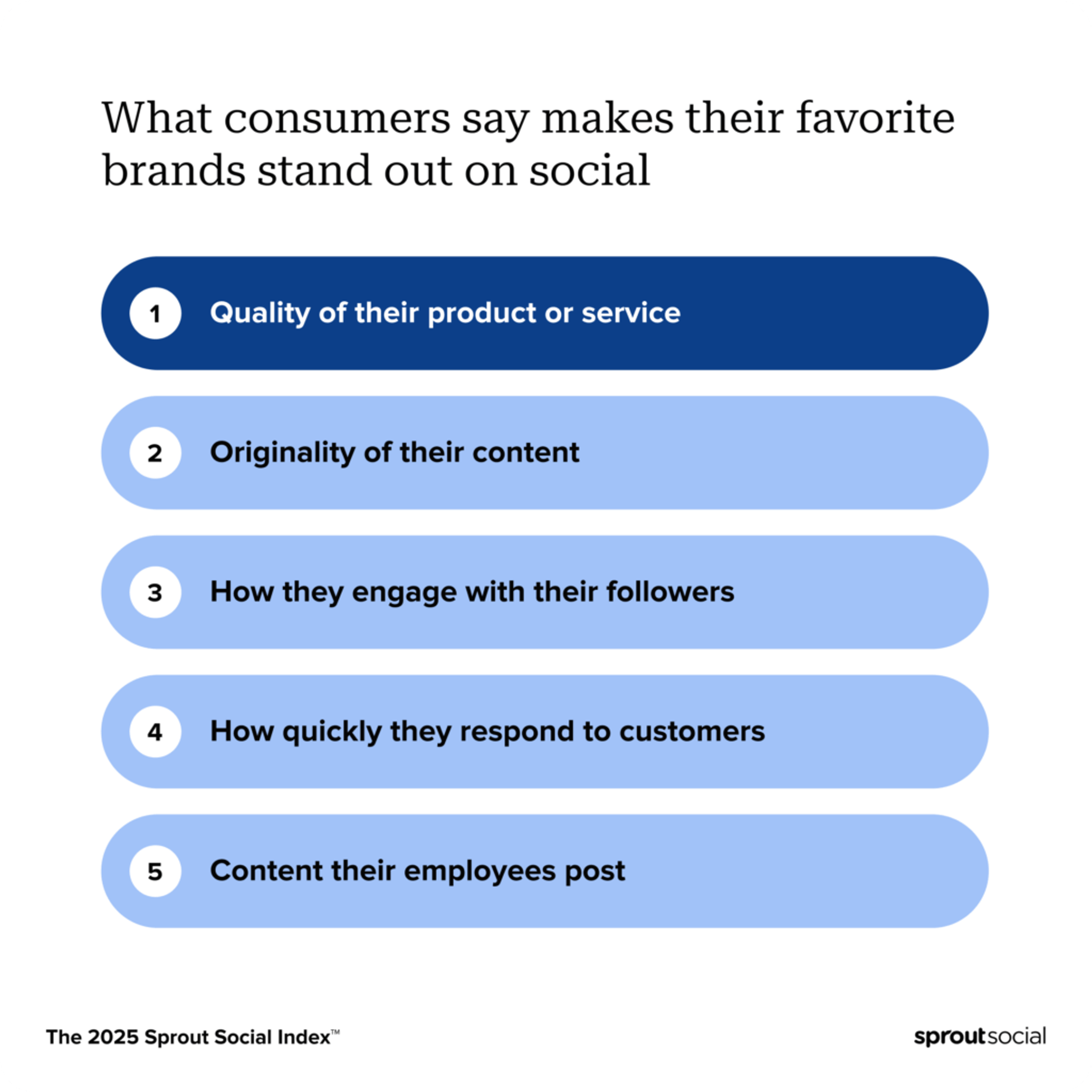
ROI Calculation Framework
Calculate your social media ROI using this simple formula:
Revenue Generated from Social Media - Social Media Costs / Social Media Costs × 100 = ROI Percentage
Track customer lifetime value from social media acquisitions. Customers who discover you through social media often have higher lifetime values because they already connect with your brand story.
Small businesses report a median ROI of 133% from social media advertising, meaning they earn on average $1.33 for every dollar invested.
Success Stories and Case Studies
Airbnb's Community-First Approach
Airbnb transformed from a struggling startup to a global brand partly through a brilliant social media strategy. They focused on storytelling, sharing real stories from hosts and travelers that connected everyone to the brand's mission.
Key Lessons:
- User stories are more powerful than product features
- Visual content should evoke emotions, not just show products
- Community building requires consistent engagement, not just posting
Source: AllGoodTales

Dollar Shave Club's Viral Strategy
Dollar Shave Club launched with a funny video that went viral, but their long-term success came from consistent brand personality across all social channels.
Key Lessons:
- Humor works, but it must align with your brand values
- Viral content opens doors, but consistent content builds businesses
- Personality matters more than perfection
Source: WTOP

Buffer's Transparency Approach
Buffer built their social media following by sharing everything: revenue numbers, failed experiments, and team challenges. Their transparency created trust and loyalty.
Key Lessons:
- Authenticity includes sharing failures, not just successes
- Educational content positions you as helpful rather than salesy
- Consistent value-giving builds long-term loyalty
Source: Buffer

Crisis Management and Brand Protection
Handling Negative Feedback
Every startup will face criticism on social media. How you handle it defines your brand more than the original complaint.
Crisis Response Framework:
1.
Acknowledge Fast: Respond within 2-4 hours during business hours2.
Take It Offline: Move detailed discussions to private messages or email3.
Show Empathy: Understand their frustration before explaining your position4.
Follow Up: Check back to ensure they're satisfied with the resolution
Legal Considerations
Important Legal Points:
- Always disclose sponsored content and partnerships
- Obtain proper permissions for user-generated content
- Respect intellectual property when sharing others' content
- Follow platform-specific advertising guidelines
- Consider data privacy implications when collecting customer information
Future-Proofing Your Social Media Strategy
Social media platforms and algorithms change constantly. Stay updated on platform changes, new features, and emerging trends that could impact your strategy.
Emerging platforms like BeReal and Clubhouse offer new opportunities for early adopters. Evaluate new platforms based on your audience and business goals.
Video content continues growing in importance across all platforms. Invest in video creation tools and skills to stay competitive.
AI and automation tools can enhance your social media efforts. Use chatbots for customer service, AI writing tools for content ideas, and automated analytics for performance tracking.
Building Your Social Media Team
As your startup grows, you'll need dedicated social media team members. Start with one person who understands your brand voice and can create consistent content.
Essential team roles include:
- Content creator for posts and visuals
- Community manager for engagement and customer service
- Analytics specialist for performance tracking
- Paid advertising manager for campaign optimization
Training and guidelines ensure team consistency. Create detailed brand guidelines, voice guides, and approval processes for all social media content.
Future Trends
Social Commerce Integration: More platforms are adding shopping features. Startups should prepare to sell directly through social media.
Video-First Content: Short-form video continues growing across all platforms. Start experimenting now with video content.
AI-Powered Personalization: Use AI tools to create more personalized content at scale while maintaining authenticity.
Community Platforms: Discord, Reddit, and niche community platforms offer new opportunities for deeper customer relationships.
Social media changes fast. The startups that succeed adapt quickly while staying true to their core brand values.
Focus on building real relationships rather than gaming algorithms. Platforms change, but authentic connections with customers remain valuable forever.
FAQ
Q: How Can Startups Build a Brand Using Social Media?
Startups can build a brand on social media by sharing consistent, value-driven content, engaging directly with followers, and showcasing their mission, culture, and unique offerings to build trust and recognition.
Q: Which Social Media Platforms Are Best for Startup Branding?
The best platforms for startup branding are Instagram for visual storytelling, LinkedIn for professional credibility and networking, and X (formerly Twitter) for real-time updates and thought leadership.
Q: What Makes a Strong Startup Brand on Instagram or LinkedIn?
A strong startup brand on Instagram or LinkedIn uses consistent visuals, authentic messaging, and targeted content to engage its audience, build community, and demonstrate industry expertise.
Q: How Often Should a Startup Post on Social Media?
Startups should aim to post on social media 3–5 times per week to stay visible, maintain engagement, and adapt based on platform algorithms and audience activity.
Q: Does Social Media Presence Influence Investor Perception?
Yes, a strong and active social media presence can positively influence investor perception by signaling brand traction, customer engagement, and leadership credibility.
Read more:
Conclusion
Social media branding isn't about having perfect posts or thousands of followers. It's about building genuine relationships with people who need what you offer.
The startups that win on social media focus on helping their audience, staying consistent with their message, and adapting quickly when things change. They understand that social media is a long-term investment in customer relationships, not a quick path to sales.


About Clay
Clay is a UI/UX design & branding agency in San Francisco. We team up with startups and leading brands to create transformative digital experience. Clients: Facebook, Slack, Google, Amazon, Credit Karma, Zenefits, etc.
Learn more

About Clay
Clay is a UI/UX design & branding agency in San Francisco. We team up with startups and leading brands to create transformative digital experience. Clients: Facebook, Slack, Google, Amazon, Credit Karma, Zenefits, etc.
Learn more


